The future is cloudy — and filled with fewer headaches for operators.
If just a few years back, software was eating the world, it now looks like cloud computing will cast its influence over an ever-expanding set of industries. That’s the opinion of Lew Tucker, vice president and CTO of cloud computing at Cisco, speaking at the OpenStack Summit Vancouver.
Over the past several years, the continued adoption of OpenStack and its expansion into new areas has moved from cloud service providers, enterprise private clouds to large media companies and big science, Tucker said in a talk titled "OpenStack in an ever-expanding world of possibilities." He mapped out how OpenStack got to where it is today and how contributors can guide it to a bright future.
"It’s not just an ordinary cloud platform anymore," he added. "I view this as becoming verticalized into a couple of different industries."
You can catch the full 40-minute session, along with the rest of the Summit sessions here.
The internet paired with cloud computing is driving disruption. "Internet gives us the reach, and the cloud allows us to do it with small number of people. When those two things come together, you have the possibility for very small companies to go after entire industries."
Tucker credits Amazon with launching the self-service model that took the time-consuming hassle out of provisioning. Tucker likens this revolution to what happened when FedEx started giving customers a link and web interface to track their packages, where it used to have to maintain a call center, saving the company a lot of money and providing a great service to customers.
"There’s a strong economic foundation to everything we’re doing," Tucker said.
@lewtucker pointing out cloud economics impact on industry & firms #OpenCisco #OpenStackSummit pic.twitter.com/wBB4owkPsD
— ashley roach (@aroach) May 20, 2015
But something else happened as the cloud spread – it became a platform for cloud-native application development. By being able to spin up or kill instances quickly, you can make them dynamically elastic, so it’s easy to recover from failures.
"We know at scale those failures will happen every day, and you have to have a service that’s running non-stop."
The dev-ops people making sure that everything is running will continue to have an important role even when infrastructure is virtualized. Operations mean costs, costs can be controlled through automation and automation through software, he said.
Adoption cuts across sectors: not just cloud providers but companies from diverse industries including Bloomberg, Comcast, BestBuy and Walmart.
"It’s all very possible, though it requires a lot of work. This is still a very new technology." OpenStack becomes a new layer in the data center software stack, and services are the new platform.
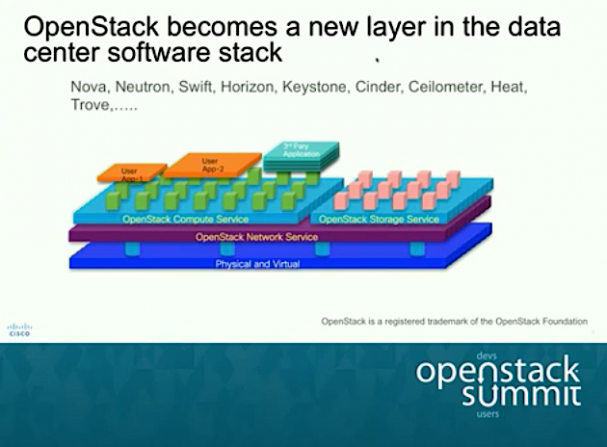
Now picture this: standards bodies such as the European Telecommunications Standards Institute (ETSI) work with OpenNFV to define reference architecture standards. "This is something that four years ago, we weren’t even thinking of," Tucker said. "It’s an entirely different space."
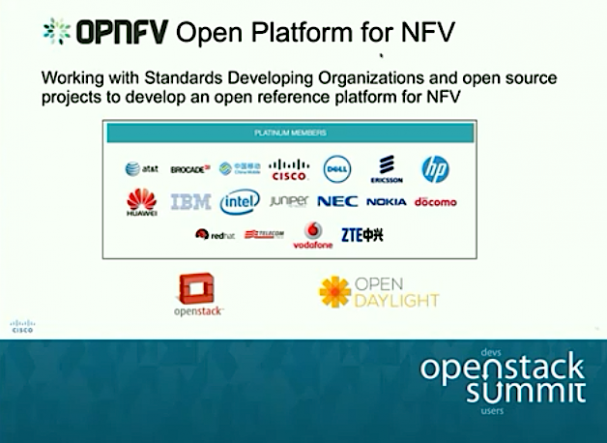
To meet that challenge, the OpenStack Foundation has formed a number of groups with the goal of becoming carrier-grade and fully enterprise ready.
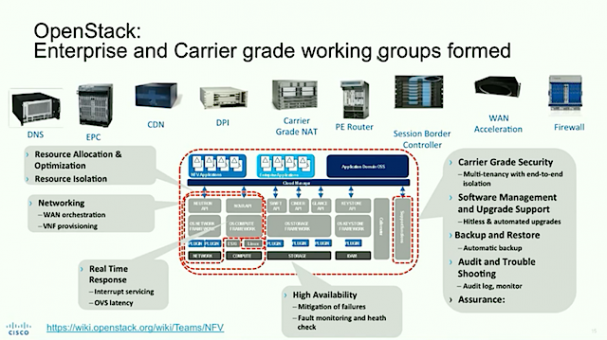
"The platform itself becomes really important, I urge you work on these blueprints so we can make OpenStack really resilient," he said.
Another sweeping change? The "nightmare" of tangled web of cables in traditional data centers are also on their way out, another way that trouble tickets are becoming a thing of the past.
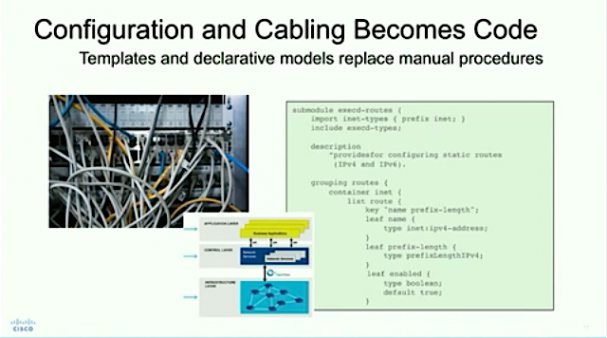
"You want software driven infrastructure to be managed by Intent. You enforce that via group-based policy."
How do you know you work for a kick-ass boss? He has a code snippet in his slides. I am a proud direct report @lewtucker #OpenStack
— Shannon McFarland (@eyepv6) May 20, 2015
Tucker imagines that automation will also take the place of the dreaded phone calls to trouble shoot problems. Cisco has launched open-source analytics tool Analytics & Visualization on OpenStack, or AVOS) as well as Cloud Pulse and CEPH Early Warning System.
The idea behind them is the same as a health monitor in a hospital."The steady beep beep beep means the patient (your cloud) is still alive," he said. "If that goes turns into a high-pitched whine, you know your cloud’s in trouble." You’ll no longer have to spend time on the phone figuring out "is it my problem or in the cloud?"
All this will bring some significant challenges to OpenStack as it keeps expanding, providing more and more services yet requiring them to meet a certain set of standards.
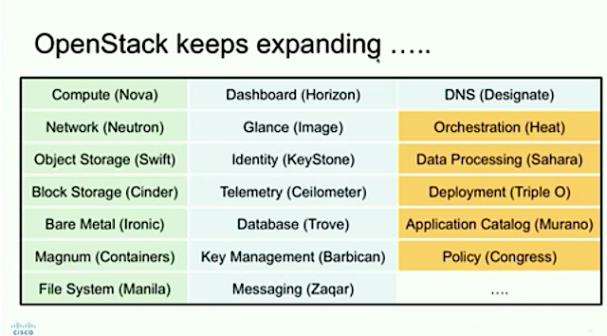
"This might seem confusing, but I view it as an opportunity," Tucker said. "It becomes a much more powerful platform that we’re working on."
"The challenge is: with this ever-growing number of possibilities, can we keep it together?" he asked. "Can we find right balance between carrier-grade, enterprise-ready solid, resilient cloud platform as we expand/grow number of services."
To do that, he said, the OpenStack community needs to take an architectural view on how these services are put together and focus on what the true value to is to the end user.
"As a community, I’d like us to find balance work on both of those layers – resiliency and scale, but keep the innovation," he said. "For those of you who are contributors, it’d be great if you work on both of those things, that’s the ideal world."
Cover Photo by xii li // CC BY NC
- OpenStack Homebrew Club: Meet the sausage cloud - July 31, 2019
- Building a virtuous circle with open infrastructure: Inclusive, global, adaptable - July 30, 2019
- Using Istio’s Mixer for network request caching: What’s next - July 22, 2019

)







